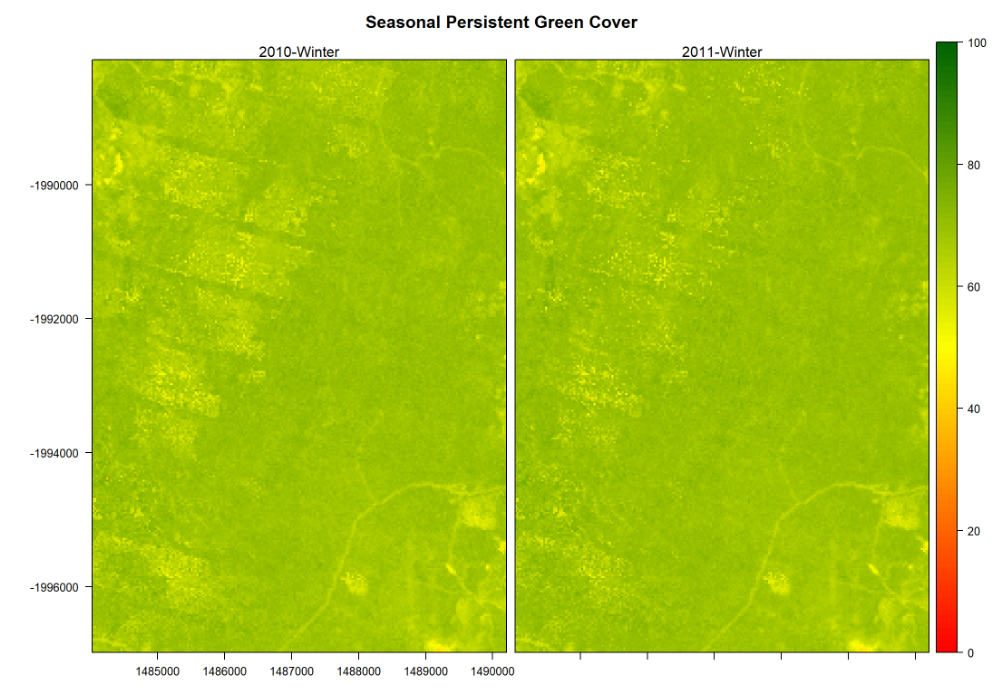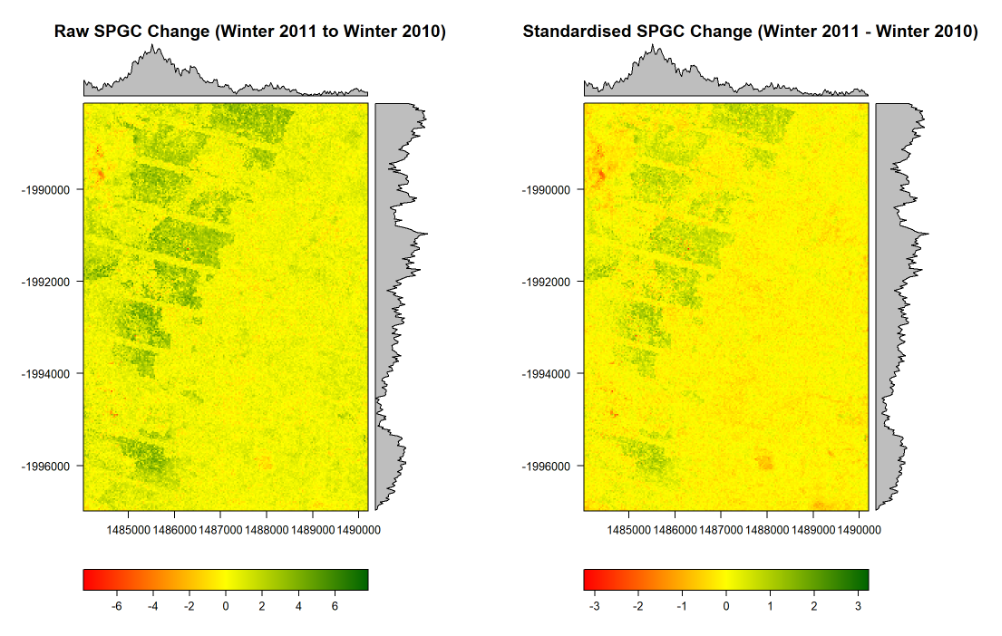To plot the cell values of a Raster* object, we can use the 'plot' function in the 'raster' package and the 'levelplot' function in the 'rasterVis' package. The later function provides enhanced plots with relative ease.
...
| Div |
|---|
| style | background-color: #F8F9F9; border: 1px solid #666; font-size: 12px; padding: 0.5rem 0.5rem; |
|---|
|
SPGC.breaks = seq(0,100,by=1)
SPGC.cols = colorRampPalette(c("red", "yellow", "darkgreen"))(length(SPGC.breaks)-1)
levelplot(SPGC.StudyArea.2010q3_2011q3.rb, at=SPGC.breaks, col.regions=SPGC.cols, main="Seasonal Persistent Green Cover", names.attr=c("2010-Winter", "2011-Winter"))
|

Example 2: Plot Raster with Raw & Standardised Differences between both Seasons (winter of 2010 and winter of 2011)
...
| Div |
|---|
| style | background-color: #F8F9F9; border: 1px solid #666; font-size: 12px; padding: 0.5rem 0.5rem; |
|---|
|
abs.max = max(abs(values(SPGC.StudyArea.Diffq3.rl)), na.rm=TRUE)
RawSPGC.Diff.breaks = seq(-abs.max,abs.max, by=0.01)
RawSPGC.Diff.cols = colorRampPalette(c("red", "yellow", "darkgreen"))(length(RawSPGC.Diff.breaks)-1)
StudyArea.RawSPGCDiff.p = levelplot( SPGC.StudyArea.Diffq3.rl, at=RawSPGC.Diff.breaks,
col.regions=RawSPGC.Diff.cols, main="Raw SPGC Change (Winter 2011 - Winter 2010)" )
abs.max = max(abs(values(SPGC.StudyArea.StdDiffq3.rl)), na.rm=TRUE)
StdSPGC.Diff.breaks = seq(-abs.max,abs.max, by=0.01)
StdSPGC.Diff.cols = colorRampPalette(c("red", "yellow", "darkgreen"))(length(StdSPGC.Diff.breaks)-1)
StudyArea.StdSPGCDiff.p = levelplot(SPGC.StudyArea.StdDiffq3.rl, at=StdSPGC.Diff.breaks,
col.regions=StdSPGC.Diff.cols, main="Standardised SPGC Change (Winter 2011 - Winter 2010)")
grid.arrange(StudyArea.RawSPGCDiff.p, StudyArea.StdSPGCDiff.p, nrow=1)
|
